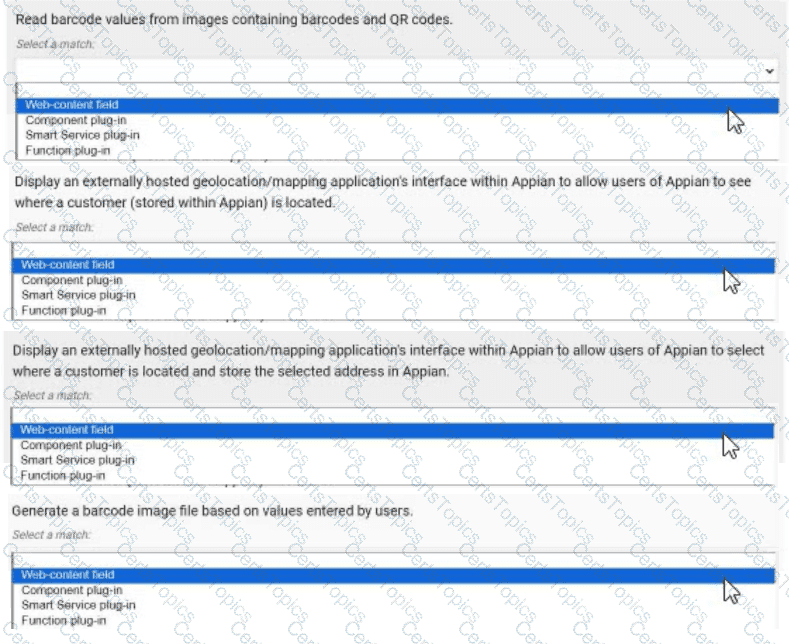As an Appian Lead Developer, handling a daily CSV integration with hundreds of thousands of items requires a solution that balances performance, scalability, and Appian’s architectural strengths. The timing (1:00 AM integration, 8:00 AM availability) and data volume necessitate efficient processing and minimal runtime overhead. Let’s evaluate each option based on Appian’s official documentation and best practices:
A. Use an Appian Process Model, initiated after every integration, to loop on each item and update it to the business requirements:This approach involves parsing the CSV in a process model and using a looping mechanism (e.g., a subprocess or script task with fn!forEach) to process each item. While Appian process models are excellent for orchestrating workflows, they are not optimized for high-volume data processing. Looping over hundreds of thousands of records would strain the process engine, leading to timeouts, memory issues, or slow execution—potentially missing the 8:00 AM deadline. Appian’s documentation warns against using process models for bulk data operations, recommending database-level processing instead. This is not a viable solution.
B. Build a complex and optimized view (relevant indices, efficient joins, etc.), and use it every time a user needs to use the data:This suggests loading the CSV into a table and creating an optimized database view (e.g., with indices and joins) for user queries via a!queryEntity. While this improves read performance for users at 8:00 AM, it doesn’t address the integration process itself. The question focuses on processing the CSV (“manipulate” and “operation”), not just querying. Building a view assumes the data is already loaded and transformed, leaving the heavy lifting of integration unaddressed. This option is incomplete and misaligned with the requirement’s focus on processing efficiency.
C. Create a set of stored procedures to handle the volume and the complexity of the expectations, and call it after each integration:This is the best choice. Stored procedures, executed in the database, are designed for high-volume data manipulation (e.g., parsing CSV, transforming data, and applying business logic). In this scenario, you can configure an Appian process model to trigger at 1:00 AM (using a timer event) after the CSV is received (e.g., via FTP or Appian’s File System utilities), then call a stored procedure via the “Execute Stored Procedure” smart service. The stored procedure can efficiently bulk-load the CSV (e.g., using SQL’s BULK INSERT or equivalent), process the data, and update tables—all within the database’s optimized environment. This ensures completion by 8:00 AM and aligns with Appian’s recommendation to offload complex, large-scale data operations to the database layer, maintaining Appian as the orchestration layer.
D. Process what can be completed easily in a process model after each integration, and complete the most complex tasks using a set of stored procedures:This hybrid approach splits the workload: simple tasks (e.g., validation) in a process model, and complex tasks (e.g., transformations) in stored procedures. While this leverages Appian’s strengths (orchestration) and database efficiency, it adds unnecessary complexity. Managing two layers of processing increases maintenance overhead and risks partial failures (e.g., process model timeouts before stored procedures run). Appian’s best practices favor a single, cohesive approach for bulk data integration, making this less efficient than a pure stored procedure solution (C).
Conclusion: Creating a set of stored procedures (C) is the best option. It leverages the database’s native capabilities to handle the high volume and complexity of the CSV integration, ensuring fast, reliable processing between 1:00 AM and 8:00 AM. Appian orchestrates the trigger and integration (e.g., via a process model), while the stored procedure performs the heavy lifting—aligning with Appian’s performance guidelines for large-scale data operations.




